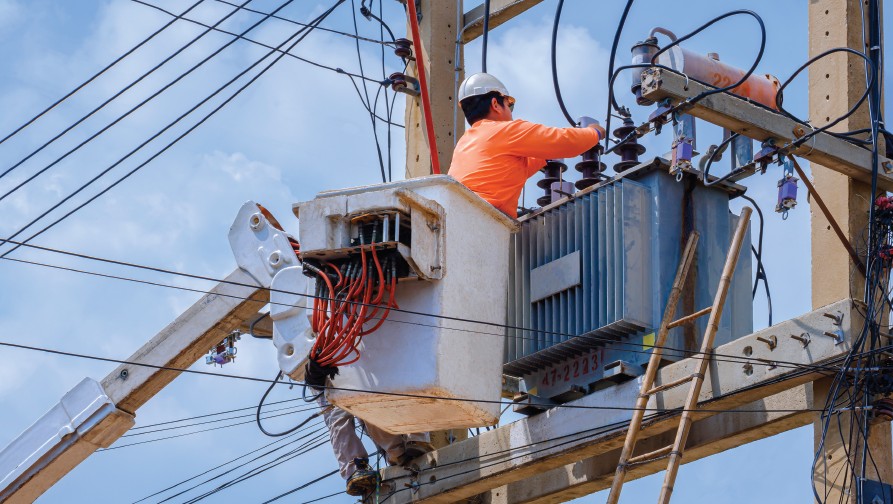As the weather heats up, so does our risk of exhaustion and stress. We all know about the dangers of freezing cold and frostbite. But what about heat-related illnesses? It turns out that summer can be just as threatening as winter months.
Although summer is a time for outdoor fun and vacations, working in the heat can be dangerous for electrical workers. Whether your employees are in the sun for long hours or inside a hot facility, it’s important to be aware of heat-related illnesses in order to implement prevention measures and maintain a safe workplace. The National Weather Service offers one way for employers to stay on top of this during hot months — their daily heat index outlines risks related to air temperature and humidity. This can be especially beneficial for operations such as farms, construction, landscaping, and electrical worksites.
It’s also vital to monitor the heat index of indoor workplaces that don’t have natural airflow, such as warehouses, iron and steel foundries, glass and rubber product facilities, commercial kitchens, laundries, chemical plants, and more. Heat-related illnesses cause thousands of workers trouble every year, but the good news is that they’re largely preventable if you’re aware and proactive.
Heat-related Illnesses on the Job
According to OSHA, the following heat-related illnesses can result from hot weather and working conditions:
- Heat exhaustion: This is due to dehydration. Symptoms can include headache, nausea, and dizziness.
- Heat rash: Caused by blocked sweat glands, this irritating skin condition is a common problem in work environments.
- Heat muscle cramps: These result from dehydration and loss of electrolytes due to sweating. An individual is more susceptible to heat cramps when muscles are tired and low on fluids.
- Heatstroke: Although the above conditions can be serious, heatstroke is the most severe. This life-threatening medical emergency occurs when the body is exposed to intense heat and fails to regulate its own temperature.
Heat-Related Illnesses are Preventable
Airflow and ventilation are vital aspects of improving air temperature and quality, as well as reducing the risk of heat-related illnesses. Heat stress prevention equipment can be used indoors, outdoors, and in confined spaces to relieve workers on hot days and help prevent conditions such as heat exhaustion and heat stroke. Any time the temperature is above 91 degrees, you should implement some precautions. This can be done by cooling down your workplace with air conditioning, fans, increased ventilation, and more. There are even products with cooling and evaporative properties that include neck towels, vests, and hard hat pads, that are key to keeping workers cool, dry and comfortable. In 2018, Cal/OSHA noted that the following four steps can help prevent the heat-related illnesses outlined above:
- Develop a written heat illness prevention plan for your specific situation (based on your workplace or job sites, that may include fans, umbrellas, increased ventilation, etc.)
- Train all employees and supervisors on heat-related illnesses
- Provide water for employees, and encourage them to drink one quart an hour
- Provide shade options when temperatures are above 80 degrees (or when requested)
It’s critical to be aware of the symptoms of heat-related illnesses and include emergency steps in your written prevention plan. If you believe an employee has heatstroke, call 911. Less severe symptoms may indicate one of the other illnesses, which will require that the individual take a break, drink water, and use a cold compress. When the body is overheated, it needs rest from physical activity to regulate body temperature.
By following your organization’s heat illness prevention plan, ensuring workers are properly trained, knowing the warning signs of these dangers, and providing them shade options, cooling equipment and products, and plenty of opportunities to stay hydrated, your team can minimize the risk of heat-related illnesses this season.
For more information on heat-related illnesses, go to https://www.osha.gov/SLTC/heatstress/prevention.html.











Find Us on Socials